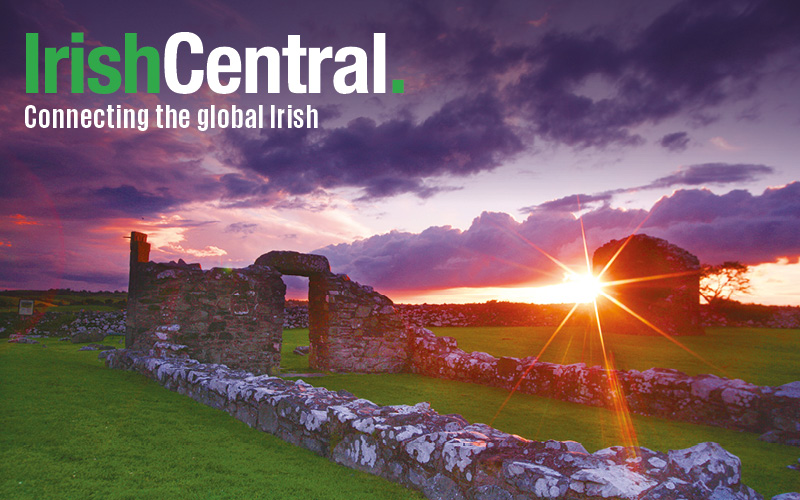The death of Ted Kennedy precedes by three weeks the end of John Sweeney’s 14-year tenure as president of the AFL-CIO. Together, these events signal the end of an epoch in American political history: that of Irish American leadership of the nation’s liberal institutions and Democratic organizations.
Time was, of course, when the Democratic Party was largely big-city machines led by and composed of Irish Americans; when the governments of Boston, New York, Philadelphia, Chicago and San Francisco were run by, and often for, the Irish; when labor, from the CIO’s Philip Murray to the AFL-CIO’s George Meany, was run by the Irish, too. As early as the 1910s and ’20s, when the greatest of all Irish bosses, Tammany Hall’s Charley Murphy, dominated New York politics, the smarter Irish bosses became adept at assembling cross-ethnic coalitions, just as the more progressive Irish labor leaders became tribunes for workers regardless of ethnicity. By the time Ted Kennedy led America’s liberal cause and John Sweeney led its labor movement, there was nothing remotely ethnocentric in their politics, although their cultural Irishness was unmistakable and the Boston and Bronx Irish, respectively, in their voices were impossible to miss.
Today, though, it's hard to find the Irish mayors and governors who were once the backbone of the Democratic Party. In Chicago, the Daley dynasty rolls on, but that is the exception. Big-city mayors are much more likely to be African American, Jewish or Latino. As for labor, there are still a number of Irish American leaders of the building trades, but just one of the largest unions is headed by an Irish American: the American Federation of State, County and Municipal Employees, whose president, Gerald McEntee, a Sweeney contemporary, is the longest-serving member of the AFL-CIO executive council.
When the Irish began arriving en masse in the 1840s, they were met with savage hostility by America’s largely Protestant native-born population and shunted into ghettos. In their residential ghettos, after several decades, they discovered the power of the ballot box, political organization and municipal employment. In their occupational ghettos, laying railroad track and working on construction crews, they became America’s first distinct paid ethnic working class (African Americans were a distinct working class, too, but unpaid, and then barely paid). Other immigrant groups, also clustered into ghettos, found that the Irish had gotten there first, and that they maintained a grip on state, city and union politics that outlasted the days when the Irish constituted a clear majority of city voters or blue-collar workers.
It requires no great leap backward in the Kennedy or Sweeney family histories to uncover their roots in Irish machines, both political and labor. Senator Kennedy’s maternal grandfather, John F. Fitzgerald (“Honey Fitz”), was the first native-born Irish American mayor of Boston. Sweeney’s father was a New York City bus driver active in his union. Kennedy could claim the intense allegiance of the Massachusetts Irish in his initial Senate races, though he strained some of that allegiance when he backed efforts to integrate Boston schools in the early 1970s. Sweeney first worked for the distinctly non-Irish International Ladies Garment Workers Union, but he soon became a leader of New York's building service union, whose janitors and doormen, once preponderantly Irish, had largely ceased to be so by the time Sweeney arrived.
No great mystery attends the diminution of the Irish presence in the leadership roles of the Democratic Party. By the mid-20th century, the Irish had begun moving to the suburbs and into a far wider range of occupations than their parents and grandparents ever could. Many intermarried. Many became Republicans. The old-line urban machines largely collapsed. Unions grew more diverse and, in time, weaker. But even as the Irish presence in Democratic institutions waned, Irish leadership remained wired into the DNA of many of these groups, so that some building trades unions with small Irish memberships still have Irish presidents, and Richie Daley still presides over a very polyglot Chicago. (This time lag is by no means peculiar to the Irish. America’s garment and apparel union, now the Workers United affiliate of the Service Employees International Union, is still led by Jews, as it has always been, though there probably aren’t half a dozen Jewish garment workers in the United States today.)
Irish American leaders of Democratic and labor institutions will continue to bubble up – but not necessarily in institutions that have been historically Irish American. Last month one Michael Mulgrew of Staten Island succeeded Randi Weingarten as head of the United Federation of Teachers, the New York City teachers union. Weingarten had been the third in a 50-year succession of Jewish UFT presidents – not surprisingly, since in its formative years the union was heavily Jewish. With Mulgrew now running the teachers union, the question becomes: When will a Jewish woman run one of New York’s building-trades locals?
Kennedy and Sweeney (who is two years Kennedy’s junior) probably will be the last major Irish American leaders to have risen through what were, or recently had been, Irish American institutions. Both ended up outliving those institutions by decades, but both channeled the best of the Irish American heritage – its passion for justice, its empathy for the excluded, its strong sense of class – into their work. In that sense, Ted Kennedy’s America was a place where everyone was Irish and deserved a fair shot – and it was the duty of their government to provide it.
Harold Meyerson writes about politics and policy for The Washington Post, where this article first appeared.




Comments